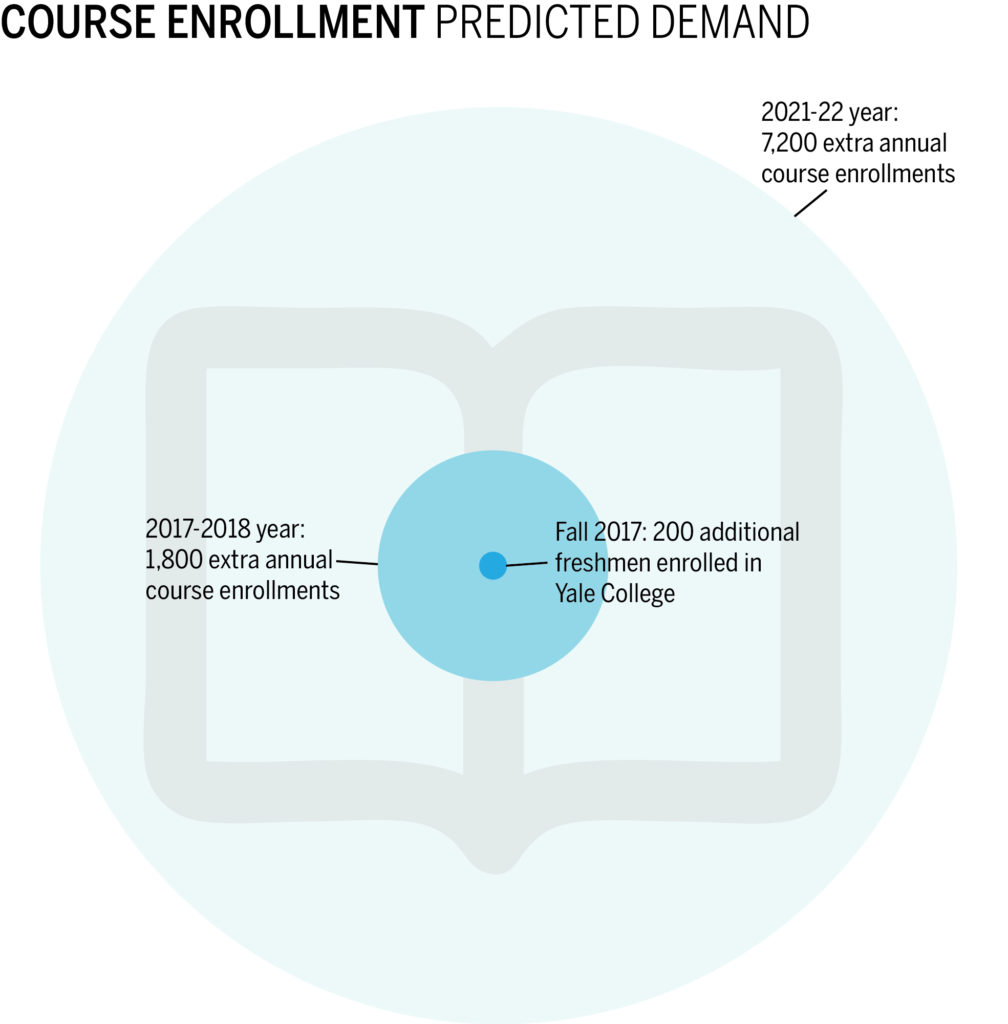
Surbhi Bharadwaj
With Yale College’s upcoming expansion to accommodate 800 more students over the next four years, there will be an increased demand for graduate teaching fellows for undergraduate courses. Although the University does not plan to enroll more graduate students, administrators are optimistic that Yale will be able to accommodate the increased demand for graduate teaching fellows.
The administration expects 200 additional freshmen to enroll at Yale next fall, creating about 1,800 extra course enrollments for the academic year. In four years, the expansion will result in about 7,200 additional course enrollments annually. In most cases, the University will make space for the additional students by adding more sections to existing courses, but these sections will have to be taught by the same number of students as they currently are, according to a Sept. 21 report circulated to the Faculty of Arts & Sciences.
Administrators interviewed said the change will have an uneven impact across different departments, depending on the number of graduate students in their respective programs.
“The number of graduate students in our programs is not driven by teaching needs in Yale College, but rather by the academic strength of the graduate programs” said Lynn Cooley, dean of the Graduate School of Arts & Sciences.
Cooley added that other factors also play a part in determining the number of graduate students at Yale, including the number of faculty members, as well as job prospects for Yale graduates.
Even without the expansion, some students are already complaining about oversubscription in popular courses. For example, enrollment in the Biology 101 and 102 sequence, a requirement for pre-med and many STEM majors, has hovered around 200 students every semester since spring 2014.
Cerys Holstege ’19 said she was left without a spot in the introductory Biology sequence, BIO 101 and 102 during her freshman fall. Holstege had to wait another semester to take the course, which delayed her academic plans, she said.
“It really messed up my entire academic curriculum from then on out,” said Holstege.
She added that many students who took the class with her last spring had similar experiences with course registration. Experiences like Holstege’s may become more common as an enlarged student body size relies on a fixed number of teaching fellows for discussion sections.

However, some departments have already seen increased demand over the past few years and have responded by experimenting with new programs without adding more graduate students to their departments.
Last spring, for instance, computer science faculty approved to extend the use of Undergraduate Learning Assistants, undergraduates who fulfill many of the duties traditionally assigned to graduate student teaching fellows, to all of the courses offered by the department. ULAs had previously only been approved for use in CPSC 100, an introductory-level class more commonly known as CS50.
The department’s most popular classes now employ a team of ULAs led by a course manager, said computer science lecturer Jason Hirschhorn, who teaches CS50. The course managers for two of the department’s core classes, CPSC 201 and CPSC 223, are also members of the CS50 staff.
“They’re able to adapt what we’ve done with CS50 for those other courses depending on their needs,” Hirschhorn said.
The ULA program does have some downsides, according to computer science professor Brian Scassellati. For example, undergraduates are prohibited from working during reading week and exam period.
Undergraduates also tend to be less reliable than graduate students, Scassellati said. Two of the undergraduates he hired to assist teach his robotics lecture dropped out a week before the start of classes, leaving him with just one graduate student teaching fellow to support a class of sixty students, he said.
“I’ve never had a graduate student TA drop out in 16 years at Yale,” Scassellati said.
So far, only the computer science department has experimented with hiring undergraduates for teaching positions, though the Economics and Mathematics departments regularly hire undergraduates to grade student assignments.
Other departments plan to hire more non-ladder faculty as well as appoint “course coordinators” to coordinate the greater number of sections, according to the report.
“This model is working well already in the introductory Bio 101-104 series,” said Cooley.
Cooley expressed confidence that Yale will be able to meet all instructional needs, noting that in most courses, there is already substantial room for the expected enrollment increases. Ultimately, she said she believes the expansion may benefit some graduate students by offering more teaching opportunities.
The current undergraduate population at Yale is 5,532 students.
Correction, Oct. 4: A previous version of this article incorrectly stated that a Sept. 21 report on the upcoming expansion of Yale College had been authored by members of the FAS senate. In fact, the report was written by three university deans – Tamar Gendler, Dean of the Faculty of Arts & Sciences; Jonathan Holloway, Dean of Yale College; and Lynn Cooley, Dean of the Graduate School of Arts & Sciences.







